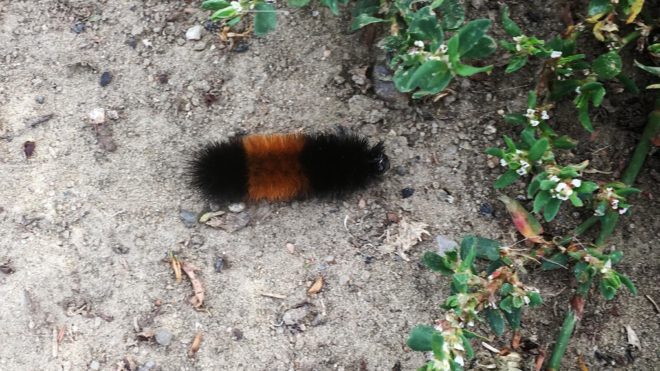“You can tell how hard the winter will be by how long each black part is,” Grandpa informed my sister and I. We were small. One of my earliest memories is this. All three of us squatted in Grandpa’s garden and looked at the furry black and rusty red caterpillar. Each end of the caterpillar was black and its middle was rusty red. It marched along on its invisible caterpillar legs and feet through the marigolds, gone to seed in early September.
Now, as I write this, I imagine the three of us from above. We are in a semi-circle around the diminutive insect. In fact, from up here I cannot see it, so it looks as if we three bow our heads and stare at the earth in a form of worship. Maybe it is, for to scrutinize a life in nature this closely is to acknowledge a power larger than we three. Grandpa stands stooped over after rising stiffly. He leans on his short handled garden spade, his rough and gnarled hands wrapped around its worn, shiny wooden handle. As always in the warmer months of the year, he wears a light blue chambray button-up shirt. A cap covers whisps of grey-white hair and his faded blue eyes peer out from under the bill. My sister, Christy, and I squat on our heels. I bet we are something like three and five. I am the older one, and at that age had decided I was much more worldly than Christy. We are wearing our usual blue jeans, sneakers, and t-shirts. Christy’s long blond hair is in two braids. The ends are fastened by those rubber hair bands that had two plastic knobs on them that looked like lollipops. My short brown hair sticks out on the sides as it always did despite my best efforts to plaster it down.
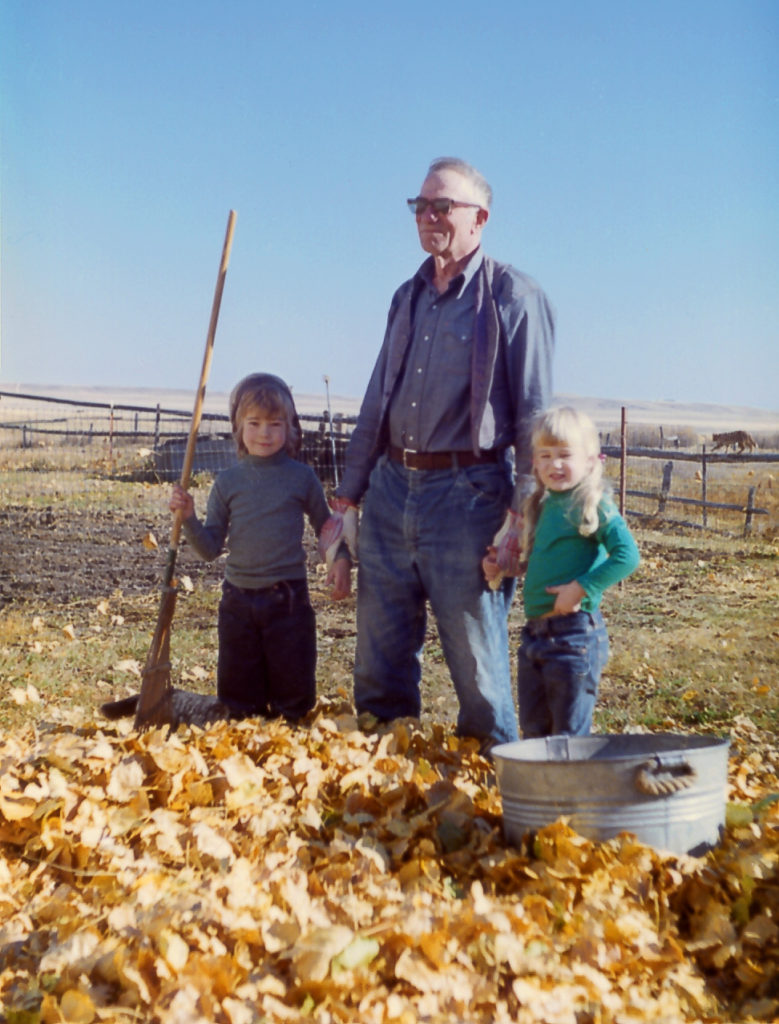
photo by Lynne Haldemann
“How do you know, Grandpa?” my shrill little voice inquired. The caterpillar now wove in and out of the branches of the marigolds. It stopped and appeared to contemplate a mad dash across bare ground to a bean plant. We bent closer and saw its black head shine on one end of its bristly body.
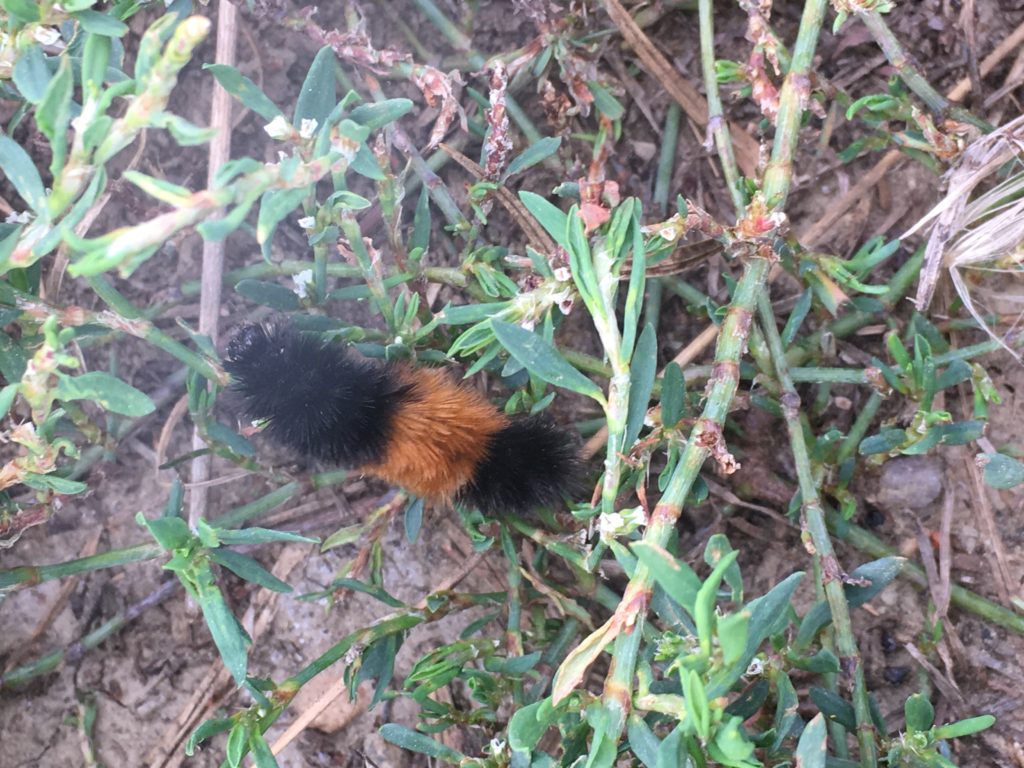
Grandpa’s gruff voice told us how it was. “If the black parts are bigger than the middle red part, the winter will be long and hard. But if the red part is wider and squeezes the black parts out to each end of the caterpillar, the winter will be easy.” Our eyes got wide and we put our noses down close to the caterpillar, who now strode across the barren garden soil between the row of marigolds and beans like a camel crossing the desert. Its bristles tickled our faces. We giggled and scrubbed our hands over our noses.
Much later in life I learned the black-and-orange caterpillars, as we called them, were actually a woolly bear caterpillar. They are also called woolly worm, fuzzy worm or black-ended bear. Funny. How did a caterpillar ever end up with “bear” in its name? I like the name woolly bear best. The caterpillars are the larval form of the Isabella tiger moth. The furry caterpillars hatch during warm weather, but by late summer are in search of a spot to make it through the winter. They like things like the undersides of bark, or inside hollows of rocks or logs. This time of year they are easy to spot as they crawl along looking for a likely winter abode.
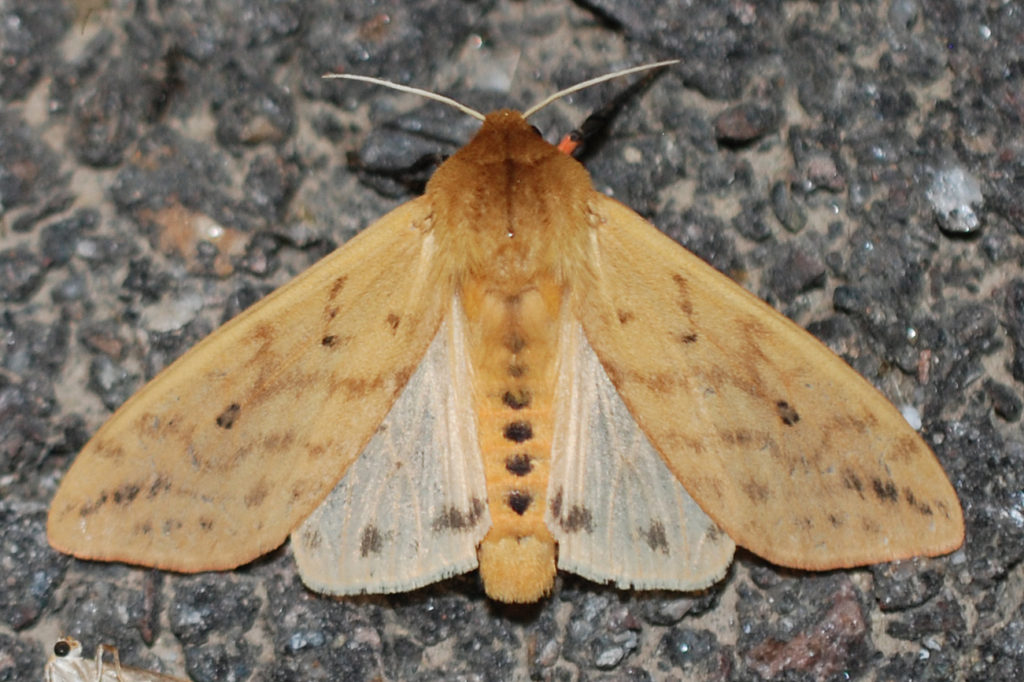
photo sourced from iNaturalist.org
The caterpillar, exhausted after its journey across the expanse, reached a bean stem. It stopped. Grandpa handed Christy a twig and she poked at the caterpillar. It dropped to its side and curled up into a furry lozenge shape of black and rust red. Now the black parts were together and the rust red stretched between. We could see that each color was about equal.
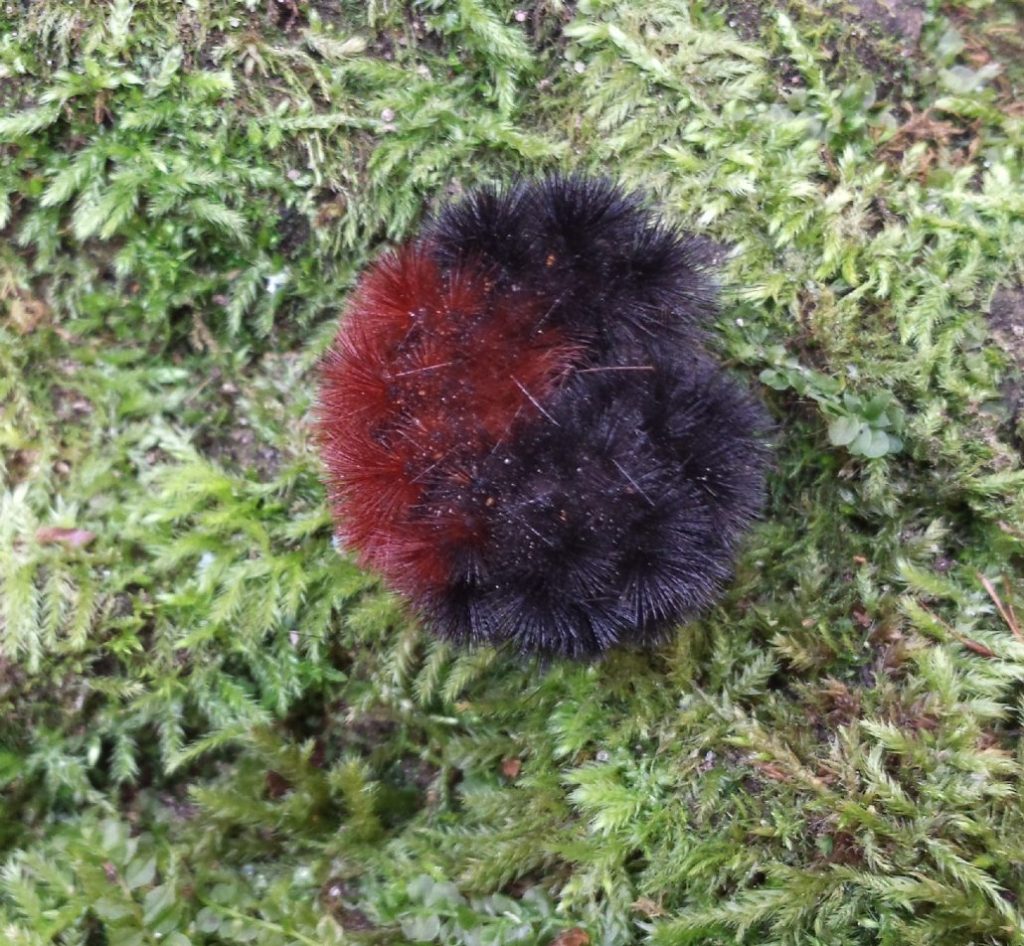
photo by Jessie Eckroad
“Grandpa, it is going to be a normal winter!” I declared wisely. “The black and orange are the same!” Grandpa patted me on top the head as he used the spade to push himself upright. He tramped off to dig up some weeds. Christy and I looked at one another. We jumped up and rustled through the marigolds to see if we could find evidence of another normal winter. No additional fuzzy caterpillars materialized. After some time we wandered off to play in the shelter belt. As we crossed the driveway, we spotted a tiny, furry black and rust caterpillar that treaded for all it was worth towards the lilacs. We ran to see if it agreed with the previous caterpillar about winter. On our hands and knees, we followed it closely. After much discussion, we concluded it concurred with the first caterpillar. A “normal” winter was forecast.
The Old Farmer’s Almanac website has an informative article about woolly bear caterpillars. You can find it here: https://www.almanac.com/content/woolly-bear-caterpillars-and-weather-prediction# All of us have probably heard that the type of winter bearing down on us can be predicted by the caterpillars. One of the first people to study this was Dr. C.H. Curran who was the curator of insects at the American Museum of Natural History in New York City. In 1948 he traveled 40 miles north of the city to Bear Mountain State Park to investigate whether it was true or not that wooly bears forecast the winter. From 1948 to 1956, Dr. Curran counted how many of the caterpillar’s 13 segments were rusty. In general, the rusty segments numbered from 5.3 to 5.6, which was good third of the caterpillar’s body. The winters during this time were mild, so Dr. Curran’s conclusion was that perhaps the caterpillars did predict the coming winter. However, being a scientist, Dr. Curran knew his data samples were small and did not prove the point beyond a doubt. He, his wife and friends formed the Original Society of the Friends of the Woolly Bear. They used the society as a reason to leave the city in the autumn, see the leaves turning colors and count caterpillar segments.
Just a few days ago, a black-and-orange caterpillar trekked across my path. Instead of the caterpillar, I saw Grandpa. I heard his voice as he imparted to two little ranch girls the folklore of the little bug. I saw our plump little hands reach out to pat the furry caterpillar. It curled up in defense and played dead. “Don’t squash it!” Christy squeaked. “I won’t!” I retorted. I blinked. 45 years had disappeared in a flash. Now, before me, the caterpillar had reached weeds along the path. I crouched down to watch. I was wearing blue jeans, a tank top, and comfy sneaker-like shoes. My curly brown hair sprang out in all directions from its pony tail. The caterpillar’s sinuous body wriggled over and under the tangle of weed stems and leaves. The furry sections of black and rust were the same proportions as the one we had scrutinized in Grandpa’s marigolds long ago. Try as I might over the years, I had never found a caterpillar with black and rust sections of any different length than the very first one. This one had a destination in mind, for sure. Maybe that group of box elder trees 50 feet away and a crevice under a hanging piece of bark for the winter. A long hike for such a small creature. Well, I guess this winter was going to be normal. That’s what Grandpa would say.

